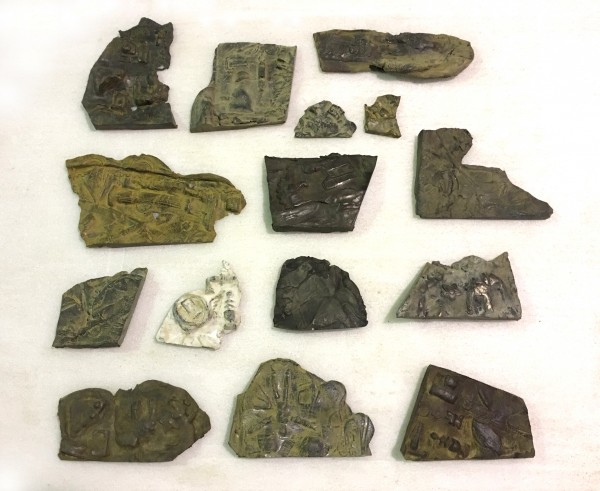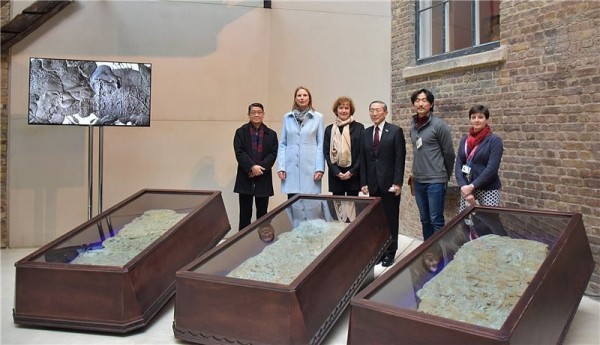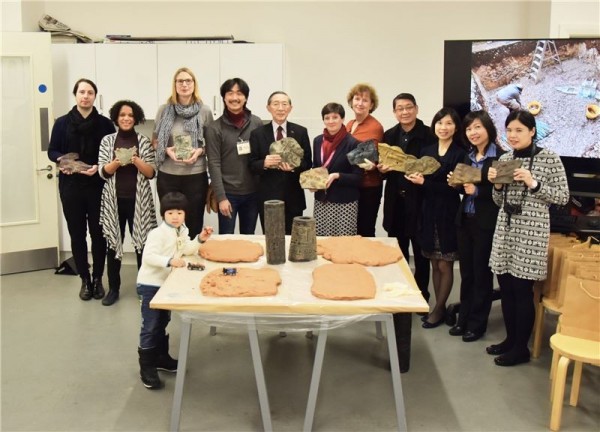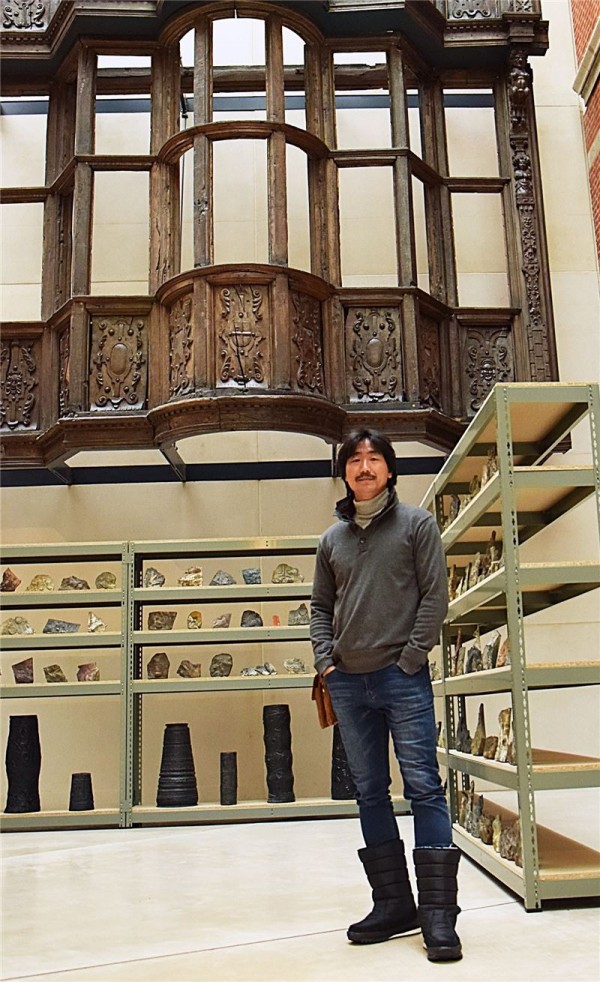Taiwan artist Tu Wei-cheng (涂維政) was part of a joint exhibition seeking to define contemporary Europe and its ever-shifting boundaries and identity at the Victoria & Albert Museum.
Commissioned by the V&A and Goethe-Institut London amidst the raging debate about the future of Europe, "Collecting Europe” asked 12 international artists to imagine what it would be like living in the year 4017 and looking back on 2017. The curatorial concept employed historic distance to help clarify "Europe” as an idea.
Tu approached "Collecting Europe” by designing a distorted and corroded installation set. Posing as an archeological site discovered in 4017, the fragmented metal plates intrigue the archaeologists of an imaginary future as they ponder what sealed the fate of the ancient civilization known as Europe.

Using plaster castings created in a group event last year, the installation was imprinted with many contemporary motifs of this era. Tu invited 50 members of the Taiwanese public to bring 10 to 15 items that held a connection to Europe, and those items were pressed in clay mold and incorporated into the design.

Tu's installation, titled "Enfolded World: Mysteries of Lost Civilisations," employed his characteristic practice of creating parallel or re-imagined worlds

V&A exhibitiongoers took on the role of an archaeologist or historian to analyze fictitious cultural relics that carry honest reflections of the present day.

Tu, 48, is a member of Hantoo Art Group (悍圖社), one of Taiwan's oldest art collectives. His works often contain elements of inception that question and explore relations between the old and the new; traditionalism and modernism; authenticity and duplicity; as well as art and commercialism.